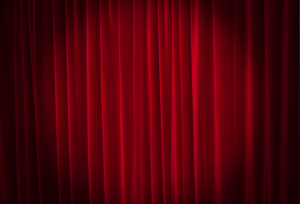Review
>
SILENT HOUSE: Watch It At Home – A Curiosity
SILENT HOUSE isn’t the first feature-length film to provide the illusion that it’s all been shot in a single continuous take. The most famous was Hitchcock’s Rope, but in his era, it was technologically impossible to actually shoot for 90 minutes straight, because rolls of film were only so long, and cameras had to be reloaded. Digital video, however, has made the stunt doable, and recently Alexander Sokurov’s Russian Ark apparently pulled off the feat, with extraordinarily complicated content that included battle scenes and banquets as part of its history of Russia.
Even though technology now permits genuine feature-length takes, Silent House cheats–a few cuts are hidden in moments where the screen goes dark or blindingly light and in sudden camera movements. Still, one has to give directors Chris Kentis and Laura Lau (and cinematographer Igor Martinovic) credit for sustaining graceful, lengthy shots in constant motion that must have been enormously challenging to light and continuously reframe.
 When discussing Silent House, the emphasis is always going to be on the movie’s camerawork, because there’s not much else there. The picture itself is an increasingly muddled haunted house thriller. Sarah (Elisabeth Olsen) has come back to the house where she grew up, which she and her father (Adam Trese) and uncle (Eric Sheffer Stevens) are cleaning out in preparation for selling it. The windows are boarded over, most of the doors are padlocked, and there’s no electricity, so when Dad goes missing a short time into the story, what remains is an awful lot of Elisabeth Olsen stumbling from one room to another, armed much of the time with little more than a (not to be relied-upon) flashlight and becoming increasingly frazzled as creaks and slammed doors give way to bodies.
When discussing Silent House, the emphasis is always going to be on the movie’s camerawork, because there’s not much else there. The picture itself is an increasingly muddled haunted house thriller. Sarah (Elisabeth Olsen) has come back to the house where she grew up, which she and her father (Adam Trese) and uncle (Eric Sheffer Stevens) are cleaning out in preparation for selling it. The windows are boarded over, most of the doors are padlocked, and there’s no electricity, so when Dad goes missing a short time into the story, what remains is an awful lot of Elisabeth Olsen stumbling from one room to another, armed much of the time with little more than a (not to be relied-upon) flashlight and becoming increasingly frazzled as creaks and slammed doors give way to bodies.This is all fun for a while, and Kentis and Lau, who previously directed the legitimately terrifying Open Water, know how to draw out moments of suspense. Olsen, alone on screen for most of the movie, does a terrifically charismatic job of finding gradations of fear, determination and hysteria that have to be sustained for the extended length of each very long shot. Things become monotonous, though, because the limitations of the movie’s gimmick and its content mean that not very much can actually happen, just a lot of unexpected noises and shadowy figures glimpsed in the corner or background of the frame scurrying about. Although the movie provides explanations for why Sarah doesn’t just leave the damn house, one gets progressively more impatient with her. And eventually, even a low-budget horror movie has to be about something, and that’s where the script by Lau (based on a 2010 Uruguayan film that was barely released in the US) really falls apart. The last reel or so grows increasingly confused in that hey-what’s-really-going on here? kind of way that’s become its own cliche, raising more questions than it answers.
As cinematic stunts go, Silent House is reasonably fun–it’s certainly a nice change of pace from the endless “found footage” thrillers pouring in these days, and Olsen again proves herself a magnetic presence on screen. The movie’s attic, however, is ultimately empty.



